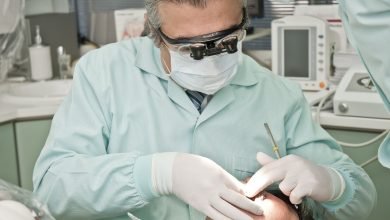What are the Responsibilities of an OBGYN?
Although it can be argued that there is no such thing as “typical” duties for an obstetrician, certain aspects of the role still apply and are generally expected to be included in someone’s workday. One of the most important parts of any OBGYN’s job, regardless of the specific practice setting, is taking care of patients by examining them, diagnosing problems and illnesses, counseling clients on issues related to their pregnancies, and working with other medical specialists who may be needed to further diagnose or treat a patient.
Who is an OBGYN
Obstetrics and gynecology (OBGY), also known as obstetrician and gynecologist (OB-GYN), is a physician who provides comprehensive health care for women throughout their reproductive years (and sometimes beyond). With a wide breadth of knowledge and expertise, an OB-GYN provides primary care, preventive care, and screening services, chronic illness management, treatment of obstetrical and gynecological conditions, reproductive health services, family planning, and infertility services.
Routine Checkups
Routine checkups are the most important aspect of an OBGYN’s job. They allow the doctor to track your health and ensure that everything is going well with your pregnancy. During a routine checkup, the doctor will usually perform a physical exam, ask about your medical history, and perform blood tests if necessary.
Contraceptive Advice
If you’re sexually active and not using contraception, then it’s very likely that you’ll be seeing an OBGYN at some point in the future — even if it’s just for a routine checkup. Ob-gyns are responsible for providing contraceptive advice to women who want it but don’t know where else to go for help. This can range from recommending different types of birth control pills or recommending condoms as a form of protection against STDs.
Abnormal Pap Smear Follow-up
An abnormal pap smear is often the first sign of cervical cancer. In this case, your doctor may order additional tests or treatment to alleviate your symptoms and prevent cancer development. Treatment may include:
Follow-up pap smear for high-grade lesions. High-grade lesions are often treated with cryotherapy or laser therapy, which destroys abnormal tissue. Cryotherapy involves freezing the lesion with liquid nitrogen; laser therapy uses heat from a laser beam to destroy the abnormal tissue. Another option is the loop electrosurgical excision procedure (LEEP), which uses electrical currents to remove a portion of the cervix that contains high-grade lesions, not just the lesioned area itself.
Pregnancy Care
Your OBGYN is an important part of your pregnancy care team. They can also help you plan a safe delivery of your baby and care for any complications that may arise during or after delivery. Your doctor will perform an exam before you become pregnant to determine if there are any complications or risks involved with becoming pregnant. They’ll also provide you with information about prenatal care, nutrition, exercise, and other factors that can affect the health of you and your baby during pregnancy.
During your pregnancy, your OBGYN will perform regular exams to monitor fetal development and make sure everything is progressing normally with the pregnancy. They’ll also monitor how well you are tolerating medications and discuss any concerns or questions you might have about prenatal care or labor/delivery options.
Performs Surgery
Doctors specializing in obstetrics may perform C-sections or other birth-related surgeries. Gynecologists in Richmond VA may also perform these procedures — particularly if they’re involved in treating cancerous tumors in reproductive organs — but they’re more likely to focus on diagnostic testing and treatment for other conditions such as ovarian cysts, endometriosis, or PID (pelvic inflammatory disease).
Treat Infections and Sexually Transmitted Diseases (STDs)
OBGYNs diagnose and treat infections such as chlamydia, gonorrhea, and syphilis by performing tests on urine samples or vaginal cultures from patients’ bodies. They also treat STDs by prescribing antibiotics or other medications if necessary. OBGYNs may also provide treatment for sexually transmitted diseases (STDs).
Some STDs are easily cured with antibiotics, while others can cause lasting damage if left untreated or not treated early enough in their development. For example, chlamydia can lead to pelvic inflammatory disease if left untreated, and this can cause infertility if not diagnosed quickly enough.
Diagnosis, Treatment, and Consultation of Female Reproductive Disorders and Diseases
Obstetrician-gynecologists are experts in diagnosing and treating female reproductive disorders and diseases. They provide comprehensive medical and surgical care throughout the life cycle. This includes providing primary care to women with no known gynecologic problems and those with specific health conditions such as infertility or recurrent pregnancy loss.
Polycystic Ovary Syndrome Treatment Options
Polycystic ovary syndrome (PCOS) is a condition that affects the menstrual cycle and causes small cysts to grow on the ovaries. The condition can make it difficult to get pregnant and cause other health problems.
They provide polycystic ovary syndrome treatment options. They may perform tubal ligations or vasectomies. When necessary, they may provide fertility treatments, including in vitro fertilization (IVF).
Conclusion
Ultimately, the responsibility of an OBGYN is to provide safe, effective, and quality care to the women they treat. They must be meticulous in their examinations, even with routine checkups. They must know what they are doing, why they are doing it, and how it relates to a patient’s health. Of course, the training required for these duties is extensive and highly regulated for this reason. As a result, some risks will always be associated with childbirth and other OBGYN procedures. However, they can be minimized when a doctor is properly trained and knowledgeable about procedures.




